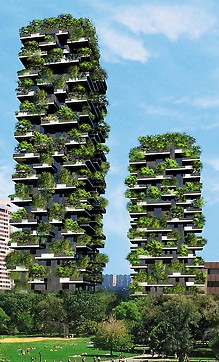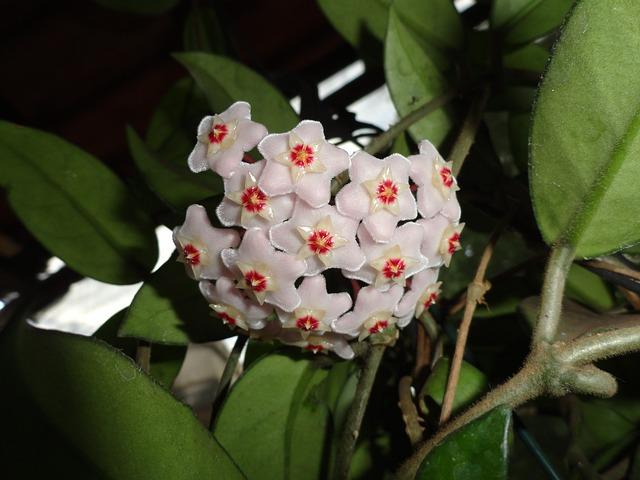Innovative Sustainable Design for a Greener Future

Have you ever looked at your pile of plastic water bottles and thought, “I could definitely turn this into a chic chandelier”? No? Just us? Well, get ready to be inspired by the innovative sustainable designs shaping a greener future. From upcycled furniture to biodegradable packaging, there’s no shortage of creative ways to save the planet – and look fabulous while doing it. So grab your reusable coffee cup and get ready to dive into the colorful world of eco-friendly design.
Key Principles of Sustainable Design
Let’s dive into the exciting world of sustainable design. It’s not just about adding a few plants here and there, it’s a whole mindset. Here are some key principles to keep in mind when designing with sustainability in mind:
– **Reduce, Reuse, Recycle:** This classic trio never goes out of style. Embrace the art of repurposing and recycling materials to minimize waste and save the planet, one soda can at a time.
– **Energy Efficiency:** Lights off, aircon on a timer, and solar panels for days. Make sure your design is as energy-efficient as possible to reduce your carbon footprint and keep the Earth a little cooler.
– **Biophilic Design:** Bring the outside in and let Mother Nature work her magic. Green walls, rooftop gardens, and plenty of natural light can do wonders for both the environment and your mental well-being.
– **Community Engagement:** Get the whole neighborhood involved in your sustainable design project. Host workshops, plant trees together, or just spread the word about the importance of living green. It’s a team effort, after all!
Examples of Innovative Sustainable Architecture
Looking for some inspiration in the world of sustainable architecture? Look no further! Here are a few examples that will blow your mind:
- Vertical Forests: These high-rise buildings are covered in lush vegetation, providing a green oasis in urban environments. Not only do they look stunning, but they also help improve air quality and reduce energy consumption.
- Upcycled Shipping Containers: Who knew that old shipping containers could be transformed into trendy eco-friendly homes? These innovative structures show that sustainability can be stylish!
- Solar-Powered Homes: Harnessing the power of the sun, these homes generate their own electricity, reducing the reliance on traditional energy sources. Plus, they look pretty cool with those shiny solar panels on the roof!
So, whether you’re a fan of hanging gardens, repurposed industrial materials, or renewable energy, there’s a sustainable architecture trend out there for you. Get inspired and start thinking outside the box (or shipping container) for your next building project!

Incorporating Renewable Energy Sources in Modern Design
When it comes to , the possibilities are endless! From solar panels to wind turbines, there are plenty of ways to make your space more sustainable. Here are a few ideas to get you started:
- **Solar Panels:** Why not cover your entire roof in solar panels? Not only will you be harnessing the power of the sun, but you’ll also be making a statement to your neighbors that you care about the environment.
- **Wind Turbines:** If you have a bit of land to spare, why not install a few wind turbines? Not only will they generate electricity, but they’ll also make your property look like a futuristic eco-friendly paradise.
- **Hydroelectric Power:** If you happen to have a stream or river running through your property, consider installing a small hydroelectric system. You’ll be able to generate clean energy while enjoying the soothing sound of flowing water.
Remember, is not only good for the planet, but it can also add a unique and exciting element to your space. So go ahead, think outside the box and embrace the power of sustainable living!

Waste Reduction Strategies in Sustainable Building
Looking to reduce waste in sustainable building projects? Look no further! We’ve got some innovative strategies that will have you saying goodbye to unnecessary trash and hello to a cleaner planet.
First up, let’s talk about **recycling materials**. Instead of throwing out old fixtures or materials, why not give them a second life by repurposing them in your project? Not only will you reduce waste, but you’ll also save money in the process. It’s a win-win!
Next, consider **prefabrication**. By constructing components off-site, you can minimize on-site waste and reduce the overall environmental impact of your project. Plus, it’s like putting together a giant puzzle – who doesn’t love a good challenge?
And last but not least, don’t forget about **composting**. Instead of sending food scraps and other organic waste to the landfill, why not turn them into nutrient-rich soil for landscaping or gardening? It’s a great way to close the loop and give back to Mother Nature.

The Role of Green Spaces in Urban Planning
Green spaces play a crucial role in urban planning, not just for aesthetic purposes, but also for the well-being of city dwellers. Here are a few ways in which green spaces contribute to creating happier and healthier urban environments:
- Environmental Benefits: Green spaces help reduce air pollution, absorb carbon dioxide, and provide habitat for wildlife. They also help mitigate the urban heat island effect by providing shade and cooling the surrounding areas.
- Physical Health Benefits: Green spaces encourage physical activity, whether it’s jogging, cycling, or simply enjoying a leisurely stroll. They also provide opportunities for outdoor exercise and social gatherings, which can improve overall well-being.
- Mental Health Benefits: Studies have shown that spending time in green spaces can reduce stress, anxiety, and depression. The calming effect of nature helps people relax and unwind, leading to better mental health.
Furthermore, green spaces can increase property values, attract tourists, and create a sense of community among residents. By incorporating parks, gardens, and green corridors into urban planning, cities can create more sustainable and livable environments for everyone to enjoy.
Advancements in Water Conservation Technologies
Water conservation technologies have come a long way since the days of dripping faucets and leaky pipes. With advancements in modern technology, we now have a plethora of tools and gadgets at our disposal to help us save every precious drop of water.
One of the most exciting innovations in water conservation is the development of smart irrigation systems. These systems use sensors to detect soil moisture levels and weather conditions, ensuring that plants receive just the right amount of water they need to thrive. Say goodbye to overwatering your lawn and hello to lush, green grass without the wastage!
Another game-changing technology in water conservation is the invention of ultra-low-flow showerheads. These marvels of engineering use advanced aerating technology to deliver a powerful shower experience while using significantly less water. Who knew that saving the planet could feel so invigorating?
And let’s not forget about greywater recycling systems, which allow you to reuse water from sinks, showers, and laundry for purposes like irrigation and flushing toilets. It’s like giving your used water a second chance at life – talk about a win-win!
Impacts of Sustainable Design on Climate Change Mitigation
Sustainable design is like the superhero we never knew we needed in the battle against climate change. By utilizing innovative strategies and technologies, sustainable design has the power to significantly mitigate the impacts of climate change. Here are some of the ways it is making a difference:
1. Energy Efficiency: Sustainable design incorporates energy-efficient systems and appliances, reducing the overall energy consumption of buildings. This means less reliance on fossil fuels and a lower carbon footprint.
2. Waste Reduction: Through the use of recycled materials and efficient construction practices, sustainable design minimizes waste production. This helps to prevent landfill overflow and reduces greenhouse gas emissions.
3. Biodiversity Preservation: By incorporating green spaces and wildlife habitats into design plans, sustainable design promotes biodiversity and helps to protect endangered species. This not only enhances the beauty of our surroundings but also contributes to a healthier ecosystem.
FAQs
Question: Why is sustainable design important for the environment?
Answer: Oh, you know, just to save the planet and all. No big deal.
Question: Can sustainable design be stylish and functional?
Answer: Absolutely! Who says you can’t save the earth while looking fabulous?
Question: How can I incorporate sustainable design into my home?
Answer: Start by swapping out those plastic water bottles for a trendy reusable one. Your home will thank you.
Question: Is sustainable design expensive?
Answer: Think of it as an investment in a cleaner, greener future. Plus, being eco-friendly is the new black.
Question: What are some innovative sustainable design ideas for a greener future?
Answer: How about a rooftop garden or a solar-powered treehouse? The possibilities are endless!
Join the Green Revolution!
Thank you for taking the time to explore the world of innovative sustainable design with us. We hope you’ve been inspired to think outside the box and consider how you can contribute to a greener future. Remember, even the smallest changes can make a big difference! So go forth, embrace your eco-friendly creativity, and let’s all work together towards a more sustainable and vibrant world. Happy designing! 🌿🌍🌟





